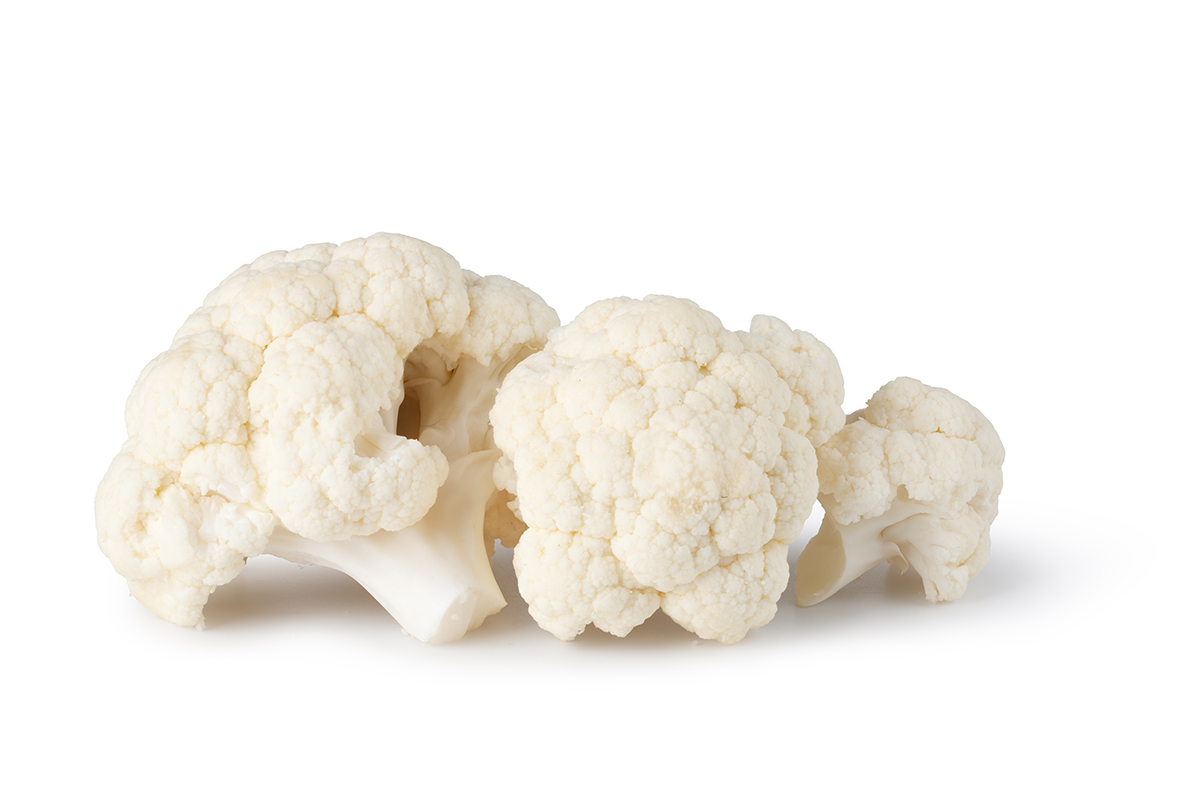Cauliflower is used as an ingredient in a number of ready-made meals that are sold as refrigerated products with a shelf life of several weeks. The long shelf life is achieved by heat-treating the dishes after they are packed in packaging that doesn’t allow air or microorganisms to enter. Undesirable changes may occur during heat treatment, but can this be avoided using new technology?
A diet rich in vegetables can result in more health benefits and contribute to a smaller climate footprint. In recent years, several innovative methods have been developed for processing food such as high pressure processing (HPP) and microwaves (MW).
These methods have the potential to improve the shelf life, colour, texture and nutritional quality of various foods.
Master’s thesis
The purpose of Christian Finseth’s master’s thesis (2021) was to investigate the effect of high pressure treatment (HPP; 400 and 600 MPa, for 2 or 5 min, 20 °C) and microwave treatment (MW; 6 kW for 90 seconds, followed by 1 kW for 600 seconds) compared to a conventional autoclave treatment (96°C for 45 minutes) on cauliflower.
Cauliflower was chosen as an example because we know that vegetables in the brassica family can be challenging to preserve without changing their quality.
The following was investigated
Microbial shelf life (total aerobic colony count and spores), texture, colour, drip loss, dry matter, antioxidant capacity (2,2-diphenyl-1-picrylhydrazyl [DPPH]), total phenolic content (Folin-Ciocalteau’s method), and ascorbic acid (HPLC) were analysed before and after processing, as well as during storage at 4°C for up to 42 days.
Colour, drip loss and appearance are crucial in terms of whether the vegetables look tempting, and texture and juiciness are important regarding consumers’ taste experience.
In terms of health, ascorbic acid in the form of vitamin C is important for the connective tissue’s production of collagen and the utilisation of iron and folic acid together with other antioxidants.
The salt formed by folic acid is folate (a type of vitamin B), which among other things is important for the synthesis of DNA thymine and therefore essential in the biochemistry of cells. These vitamins are soluble in water and are not very stable when exposed to heat compared to vitamins that are soluble in fat. Therefore, they are good indicators of whether processing affects the nutritional quality of cauliflower.
Conclusions
The various processing methods showed that HPP at 600 MPa produced low bacterial counts between days 14 and 28 of storage. On the other hand, 400 MPa resulted in high bacterial counts as early as between days 7 and 14. MW resulted in high bacterial counts on day 0 due to insufficient heating.
Autoclave samples remained below the detection limit (<2.3 log cfu/g) up to day 42. All counts of both aerobic and anaerobic spores remained below or close to the detection limit during storage. HPP at both 400 and 600 MPa resulted in the least amount of change regarding the total colour difference during storage.
The texture of the cauliflower did not differ from the control sample during storage for both HPP and MW samples, while the autoclave samples had a significant reduction in texture.
The drip loss for HPP was significantly higher than the control sample, while MW resulted in the lowest amount of drip loss.
Dry matter content was stable during storage for all processing, and there were few differences between them.
The nutritional quality of cauliflower processed using high pressure at 600 MPa for 2 minutes remained high up to day 28. The same was true for MW samples on day 0, where one could see an increase in nutritional value, probably due to improved nutrient extraction.
Autoclave samples on day 0 resulted in a 30, 27 and 40 percent reduction in antioxidant activity, total phenolic content and ascorbic acid.
The same reduction of bacteria using HPP was not achieved as with traditional autoclaving. Nevertheless, a certain amount of shelf life was achieved with an interesting result in terms of quality. The technology has clear potential.
The degree to which MW provides sufficient shelf life depends on how powerful the treatment is. The treatment was not strong enough in this study. Even though the nutrients were well preserved, it was not evident that this would still be the case if the heat load was increased sufficiently to provide a longer shelf life.
Based on general knowledge about vitamin C and microbiology, it is evident that rapid heating and short treatment at high temperatures are more beneficial than the relatively prolonged treatment that was conducted in the traditional manner (autoclaving for 45 min).
For both of the new methods investigated, there is potential in introducing synergistic treatments in order to further extend shelf life, while at the same time maintaining quality.
| Title | Author(s) | Year | |
|---|---|---|---|
| Impact of high-pressure processing (HPP) and microwave (MW) treatment on selected quality and nutritional parameters of cauliflower (Brassica oleracea var. Botrytis) Master’s thesis | Finseth, Christian | 2021 | Go to publication |

